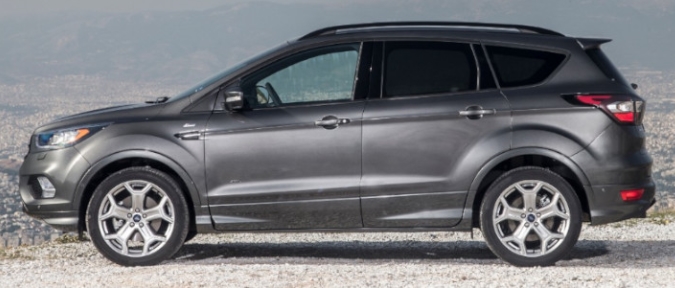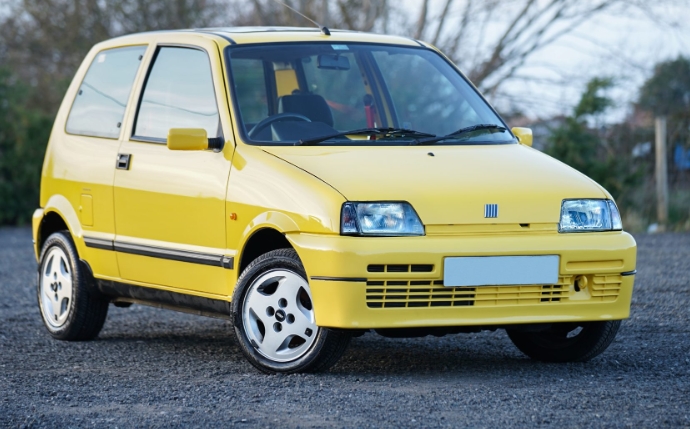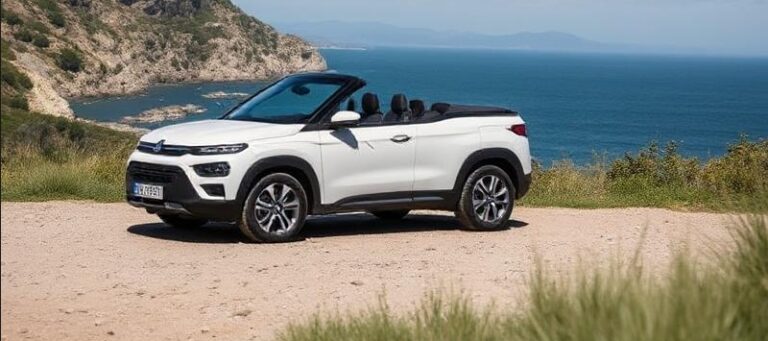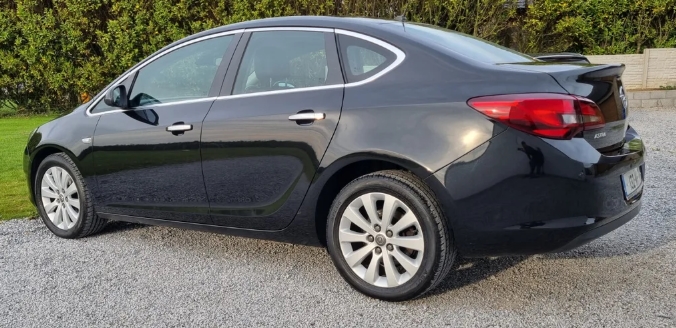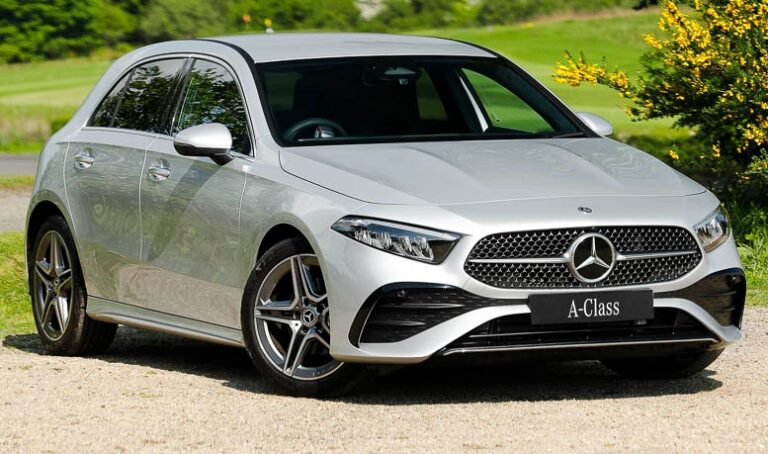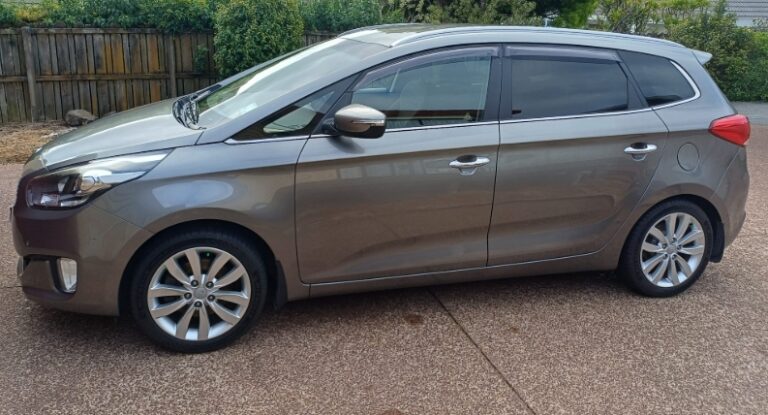The Crossover Cornerstone: Charting the Evolution of Ford Kuga
In the ever-expanding universe of the modern automobile, few segments have experienced a more explosive growth than the crossover SUV. These vehicles, blending the practicality of a hatchback with the commanding presence and perceived ruggedness of an off-roader, have become the default family car for millions. For Ford in Europe, the standard-bearer in this fiercely competitive arena has been the Kuga. From its stylish, niche beginnings to its current status as a tech-laden, electrified cornerstone of the brand, the Kuga’s evolution is a story that mirrors the changing tastes and technological priorities of the 21st-century car buyer.
First Generation (2008 – 2012): The Kinetic Trailblazer
The story of the Kuga begins with a concept. In 2006, Ford unveiled the Iosis X concept car at the Paris Motor Show, a stunning design exercise that showcased the brand’s dynamic ‘Kinetic Design’ philosophy. The public reaction was overwhelmingly positive, and Ford wisely fast-tracked a production version. The result, launched in 2008, was the first-generation Ford Kuga.
Built on the highly acclaimed C1 platform—the same underpinnings as the agile Ford Focus Mk2 and C-Max—the first Kuga was a revelation in its class. At a time when many rivals were boxy and utilitarian, the Kuga was sharp, athletic, and overtly stylish. Its raked windscreen, muscular wheel arches, and taut lines set it apart from the Nissan Qashqai, which had kickstarted the crossover craze a year earlier. The Kuga was positioned not just as a practical choice, but a desirable one.
Initially, the powertrain options were simple. The launch engine was the reliable and torquey 2.0-litre Duratorq TDCi diesel, producing 136 PS. This engine, primarily mated to a six-speed manual gearbox, was offered with either front-wheel drive or a sophisticated Haldex-based intelligent all-wheel-drive system that could preemptively send power to the rear wheels to prevent slip.
A year later, for those craving performance, Ford dropped in the charismatic 2.5-litre, five-cylinder turbocharged petrol engine borrowed from the much-loved Focus ST. Producing a potent 200 PS and emitting a distinctive off-beat warble, this engine transformed the Kuga into a Crossover with the heart of a hot hatch, available exclusively with all-wheel drive and an optional five-speed automatic transmission. In 2010, the diesel lineup was updated, with the 2.0 TDCi now offered in 140 PS and 163 PS outputs, the latter being paired with the option of Ford’s new ‘PowerShift’ dual-clutch automatic gearbox.
The trim level structure was straightforward and mirrored Ford’s wider European range:
Zetec: The entry point, it was well-equipped for its time, featuring 17-inch alloy wheels, air conditioning, the ‘Ford Power’ starter button, and front fog lights.
Titanium: This was the volume seller, adding a layer of luxury and technology. It included partial leather upholstery, automatic headlights and windscreen wipers, cruise control, dual-zone climate control, and an upgraded Sony audio system.
Titanium X: Introduced later, this flagship trim elevated the Kuga to near-premium status, featuring full leather upholstery, heated front seats, a panoramic glass roof, 18-inch alloy wheels, and xenon headlights.
The first-generation Kuga wasn’t the most spacious car in its class, and its boot was modest. However, its trump card was its driving dynamics. It drove with a precision and verve unheard of in crossovers of the era, feeling more like a slightly raised Focus than a lumbering SUV. Coupled with its standout design, this made it a critical success and established the Kuga nameplate as a serious contender.
Second Generation (2012 – 2019): The Global Player
If the first Kuga was a distinctly European creation, the second generation, unveiled in 2012, was a product of Ford’s ‘One Ford’ global strategy. This new model was designed to be sold around the world with minimal changes, known in North America as the Ford Escape. The result was a vehicle that was larger, more practical, and less stylistically daring than its predecessor.
The sharp, ‘Kinetic’ edges were softened into a more conservative, family-friendly shape. It was 81mm longer, giving it significantly more rear legroom and a much larger boot (456 litres vs 360). One much-lamented casualty of this redesign was the clever split-tailgate of the Mk1, but in its place came a headline-grabbing innovation: the hands-free power tailgate, allowing owners to open the boot by waving a foot under the rear bumper.
The powertrain lineup evolved significantly. The characterful five-cylinder petrol was retired in favor of Ford’s new, more efficient 1.6-litre EcoBoost turbocharged petrol engines, offered in 150 PS (FWD) and 182 PS (AWD) guises. The 2.0-litre Duratorq TDCi diesel remained the core of the range, available in 140 PS and 163 PS forms, with FWD and AWD options.
Technology took a huge leap forward. This Kuga introduced the Ford SYNC infotainment system with voice control and emergency assistance, alongside advanced driver aids like Active City Stop (autonomous emergency braking at low speeds) and Active Park Assist.
The 2016 Mid-Cycle Facelift
In 2016, the second-generation Kuga received a substantial facelift to align its styling with the larger Ford Edge SUV. The front end was completely redesigned, featuring a bold, hexagonal grille and sharper headlights. The interior was de-cluttered, and most importantly, the ageing SYNC system was replaced with the far superior SYNC 3, featuring a faster, more intuitive 8-inch touchscreen with Apple CarPlay and Android Auto.
Powertrains were also revised. The 1.6-litre EcoBoost was replaced by a more frugal 1.5-litre unit, and a new 1.5-litre TDCi diesel engine with 120 PS was introduced as an efficiency-focused option.
The trim level hierarchy became more sophisticated and diverse, reflecting growing market trends:
Zetec: Remained the solid entry point.
Titanium: Continued as the popular mid-range choice, with keyless entry and SYNC 3 post-facelift.
Titanium X: Built on the Titanium with features like a panoramic roof, full leather, and a hands-free tailgate.
ST-Line (post-facelift): Capitalising on the demand for sporty aesthetics, the ST-Line was a game-changer. It featured a full body kit, a black grille, 18-inch dark alloy wheels, sports suspension, and an interior with part-leather sports seats and contrasting red stitching. It offered the look of a performance model without the running costs.
Vignale (post-facelift): Ford’s new premium sub-brand, the Kuga Vignale was the most luxurious Kuga ever. It boasted unique hexagonal-quilted Windsor leather, a premium sound system, exclusive exterior styling with chrome detailing, and access to a dedicated Vignale customer service.
This second generation successfully transformed the Kuga from a stylish niche player into a mainstream family SUV powerhouse, broadening its appeal and cementing its place on the sales charts.
Third Generation (2019 – Present): The Hybrid Vanguard
Launched in late 2019, the third-generation Kuga represented the most radical transformation yet. Built on Ford’s new C2 platform (shared with the Focus Mk4), it was designed from the ground up to accommodate electrification. This focus on future-proofing was its defining characteristic.
Visually, it was another complete departure. The aggressive, upright stance of the facelifted Mk2 was replaced by a lower, sleeker, and more rounded design. It was longer and wider, yet lower than its predecessor, with a longer wheelbase that unlocked a vast amount of interior space. A key feature was the sliding rear bench seat, allowing owners to choose between maximising rear legroom or expanding boot capacity to a class-leading 645 litres.
The big story, however, was under the bonnet. The third-generation Kuga launched with Ford’s most diverse powertrain lineup ever, with three distinct forms of electrification:
Plug-in Hybrid (PHEV): The flagship model. It paired a 2.5-litre four-cylinder petrol engine with an electric motor and a 14.4 kWh battery, producing a combined 225 PS. Its standout feature was an impressive all-electric range of up to 35 miles, making it a hugely popular choice for company car drivers and those with short commutes.
Full Hybrid (FHEV): Also known as a ‘self-charging’ hybrid, this version joined the lineup later. It uses a similar 2.5-litre petrol engine but with a smaller battery that is charged by the engine and regenerative braking. It offers the seamless ability to run on pure electric power for short bursts, significantly improving urban fuel economy.
Mild Hybrid (MHEV): This system was paired with the 2.0-litre EcoBlue diesel engine. It uses a small belt-driven integrated starter/generator to assist the engine during acceleration and improve the efficiency of the start-stop system, providing a modest fuel-saving benefit.
Conventional 1.5-litre EcoBoost petrol and 1.5-litre/2.0-litre EcoBlue diesel engines were also offered, but the focus was clearly on the hybrid variants.
The interior was a technological showcase, featuring a digital instrument cluster, a head-up display, and the comprehensive Ford Co-Pilot360 suite of driver assistance systems.
The trim level structure was refined and familiar:
Zetec: The entry model, well-equipped with an 8-inch touchscreen, cruise control, and wireless phone charging.
Titanium: Added features like B&O premium audio, ambient lighting, and front/rear parking sensors.
ST-Line: The sporty choice, with its signature body kit, 18-inch wheels, and a firmer suspension setup.
ST-Line X: Added more luxury to the ST-Line, including a panoramic roof, heated seats, and a hands-free tailgate.
Vignale: Remained the pinnacle of luxury with unique styling, premium leather, and a comprehensive standard specification.
.
Many car aficionados have multiple hobbies, like boating as well as auto stuff. Those who don’t already own a boat (and even some that do), may have thought about building their own boats. It’s really not as hard as you’d think. Just take a look at these easy boat building plans!

.
The 2024 Facelift
To keep pace with ever-advancing rivals, Ford announced a major facelift for 2024. The front end was redesigned to be bolder and more assertive, heavily influenced by its American Escape sibling. The biggest change occurred inside, where the dashboard was re-engineered to house a massive 13.2-inch landscape touchscreen running the next-generation SYNC 4 infotainment system. The powertrain lineup was simplified, with a greater focus on the successful PHEV and FHEV models. A new Active trim was also introduced, featuring rugged body cladding and a slightly raised ride height to cater to a new sub-segment of buyers.
From a stylish upstart that proved crossovers could be fun to drive, through a globalized workhorse that brought practicality to the masses, to a sophisticated technological leader spearheading Ford’s charge into electrification, the Ford Kuga has consistently adapted and evolved. Its journey is a masterclass in reading the market, embracing new technologies, and transforming a single model into an indispensable pillar of a global automotive brand.
